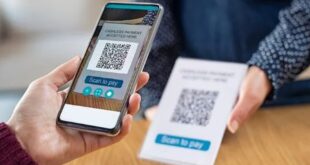On January 30, 2020, the World Health Organization (WHO) deemed COVID-19 a public health emergency. The pandemic had an ongoing impact on every aspect of human existence. The COVID outbreak has compelled companies worldwide to embrace a culture of working from home.
Although this change, like work, has some advantages, it has also raised questions about the security of remote employment. Most systems set up in homes or public cafes are very easy targets for threat actors. This can compromise the security of the remote worker and the company he works for. Let’s have a look at how remote work can be made secure for employees and companies alike.
What is Remote Work Security?
When employees perform their duties away from the office, company information and other assets are protected through “remote work security.” Remote workers require remote work cybersecurity for various reasons, including the ability to work from home, go on business trips, or perform their duties away from the company’s headquarters.
Security Threats to Remote Employees
The main security concerns with remote work that businesses need to be aware of are as follows:
● Controlling Employees and Remote Equipment
It might take time and effort to keep track of the equipment remote workers use and ensure they follow security policies on their home networks.
● Insecure Passwords
Businesses might need to implement password managers or policies to ensure that remote employees use secure passwords. The requirement for secure passwords might also be disregarded.
● Inadequate Training
Remote workers need more security knowledge and training. Employees who lack security training are more likely to use weak passwords and put the company at risk in multiple ways.
● Insufficient Backup Systems
A lack of proactive maintenance plans and a reliable backup system by your IT security staff may result in financial and intellectual damages after a security breach.
● Email phishing
Remote workers might fall victim to a phishing scam. A phishing attack could convince them to reveal sensitive data, such as banking details, credit card, and password information.
● Human Variables
Human nature is one of the biggest security threats. Employees less concerned with security may be more at risk from phishing scams and other online threats. A worker’s login information could accidentally be made public if they are easily distracted.
Tips for Safe Remote Work
The practical components listed below may be of assistance to you in securing your remote working environment.
● Applications for Data Encryption
Data or information in plaintext is encrypted into the useless ciphertext format. Data encryption is frequently a smart decision for any company or business. You should be especially careful about this if you work from home. SSL certificates and encryption software will significantly improve the security of your remote data. Websites and programs that support remote working must have the certificate installed because it will hide the in-transit data and make it unintelligible.
It would help if you made sure that every one of your employees used encrypted software as a best practice for remote work. It is much easier to obtain an inexpensive SSL certificate for a website. Using a wildcard SSL certificate allows users to use a single certificate to secure multiple first-level subdomains under the primary domain they’ve selected.
● Access Control and the Least Privilege Rule
Restricting employee privileges is a fantastic additional method for securing your remote workspace. You should be aware of the three basic levels of access privileges. The first level is the super-user level, which includes every team member with complete network access. All of these powers have terrible consequences if super-user credentials are misused.
The second level is the normal user level, the least privileged one. This user level is designed for remote employees and has the most restricted permissions. Your remote employees shouldn’t have access to or edit any files. This will greatly reduce the likelihood of data breaches.
● Utilizing Self-Selected Vendors
Working remotely requires constant communication with your third-party providers. A third-party vendor is a company that runs file servers or offers remote desktop access. It would be beneficial if you limited your relationships with partners and service providers to those who share your commitment to preserving the cybersecurity of your remote workforce.
● Virtual Private Networks (VPNs)
Another crucial step to guaranteeing their security is to mandate VPN use when remote workers access company software and data. A virtual private network adds an extra layer of security when accessing company systems from outside the office.
● Transmission of Telephone Login Data
Employees are never permitted to write down their passwords. An employee receives a password over the phone and enters it into the password protection service. Once it is entered into the password security system, the password is never again needed.
Conclusion
If you’re considering allowing employees to work from home, or if you already do, you must have adequate security procedures to protect your staff.
If you do this, your remote workers and overall security are safe. This post discussed some of the most important security measures you should take to protect your remote workers. For more information, visit: https://nordlayer.com/learn/zero-trust/what-is-ztna/
 Newspatrolling.com News cum Content Syndication Portal Online
Newspatrolling.com News cum Content Syndication Portal Online







